Doing these tests I was mainly interested to learn, how fisheye lenses behave when a strong light source like the sun is placed in front of the lens. How would the resulting sun star look? What kind of ghosting would occur and how much would the contrast suffer under such circumstances?
I do a lot of mountain photography. So the size of a lens is an important factor minimize the weight of equipment. For this reason I have included a size comparison of tested lenses.
Introduction

Below you find some informations that was helpful to me in selecting the lenses for my test. The number of lenses/groups of a lens determins how many reflecting surfaces are there that might produce ghosting. The number of aperture blades determins how many rays the expected sun star will have.
| Aperture blades | 4 | 5 | 6 | 7 | 8 | 9 | ... |
| Rays | 4 | 10 | 6 | 14 | 8 | 18 | ... |
All listed lenses can be mounted on Canon EF by using an adapter or by converting the lens.
Canon
| tested | design | optic | blades | length | weight | |
| EF 2.8/15 | no | 1987 | 8/7 | 5 | 62 mm | 330 g |
David Klepacki told me that in his fisheye tests he found that the Canon EF 2.8/15 and the Sigma EX 2.8/15 have poor flare control compared to the Carl Zeiss Distagon 2.8/16. So I left out these two lenses.
Carl Zeiss
| tested | design | optic | blades | length | weight | |
| Distagon 2.8/16 | yes | 1973 | 8/7 | 6 | 67 mm | 460 g |
Leica
| tested | design | optic | blades | length | weight | |
| Elmarit 2.8/16 | no | 1970 | 11/8 | 6 | 60 mm | 460 g |
The Elmarit 2.8/16 is a very good performer but due to its compex optical construction it is said to be quitet prone to flare. You can't adapt it to Canon EOS without modifying the lens or shaving the mirror of the body.
Nikon
| tested | design | optic | blades | length | weight | |
| Nikkor 3.5/16 | yes | 1973 | 8/5 | 7 | 51 mm | 330 g |
| Nikkor 2.8/16 | no | 1979 | 8/5 | 7 | 56 mm | 330 g |
Of the two Nikon fisheys lenses Bjørn Rørslett recommends the older Nikkor 3.5/16 especially for shooting into the sun.
Olympus
| tested | design | optic | blades | length | weight | |
| Zuiko 3.5/16 | yes | 1975 | 11/8 | 6 | 31 mm | 180 g |
There is a singel-coated and a multi-coated version of the Olympus Zuiko 3.5/16 fisheye. For my tests I used a multi-coated one. You can recognize the multi-coated version by the word "NEUTRAL" written on the filter ring. The older singel-coated version has got "L39" written on it instead of "NEUTRAL".
Pentax
| tested | design | optic | blades | length | weight | |
| Takumar 11/18 | no | 1963 | 4/3 | 0 | 23 mm | 98 g |
| SMC 4/17 | yes | 1967 | 11/7 | 3 (6) | 34 mm | 235 g |
| SMC 2.8/16 | yes | 1985 | 9/7 | 6 | 56 mm | 320 g |
The Takumar 11/18 has got no aperture blades but a disc with four holes for the apertures f/11 to f/32 instead. Unfortunately it is singel-coated and it is said to be very soft out of the center.
The SMC 4/17 has got only three aperture blades. But they are angled and produce a hexagonal aperture.
The SMC 4/17 has got only three aperture blades. But they are angled and produce a hexagonal aperture.
Sigma
| tested | design | optic | blades | length | weight | |
| EX 2.8/15 | no | 1999 | 7/6 | 7 | 65 mm | 370 g |
Zenit
| tested | design | optic | blades | length | weight | |
| Zenitar 2.8/16 | no | 1989 | 11/7 | 6 | 50 mm | 310 g |
Yashica
| tested | design | optic | blades | length | weight | |
| ML 2.8/15 | no | 1975 | 10/7 | 5 | 71 mm | 445 g |
The following images of the tested lenses were all taken at the same scale.
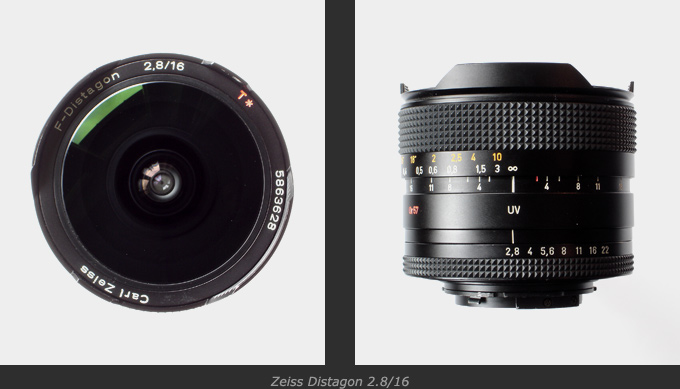
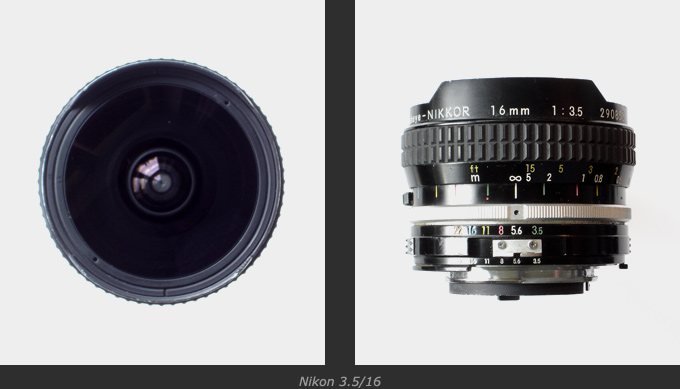
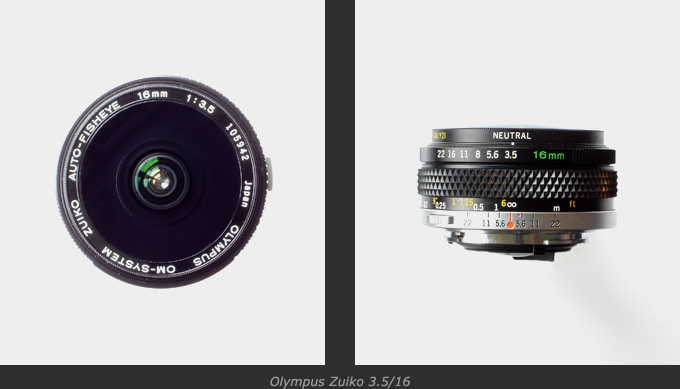
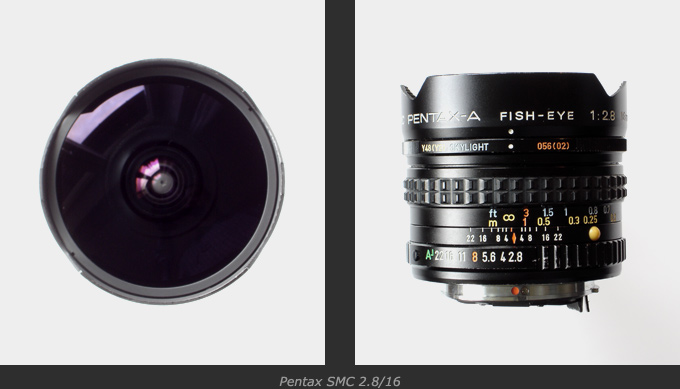
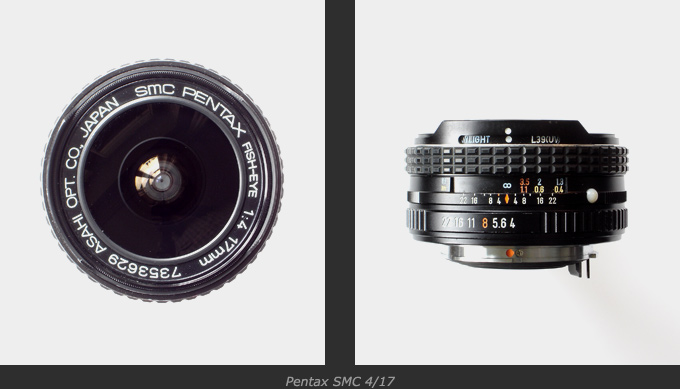
pictures and site copyright by stefan rohloff

 Deutsch
Deutsch